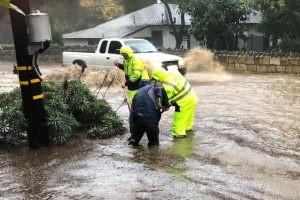Tropical storm Fiona strengthened as it approached Puerto Rico on Saturday, urging the National Hurricane Center (NHC) to issue a hurricane warning and warnings for “life threatening floods and mudslides” for the US territory, as well as watches for the US Virgin Islands.
What is the tropical storm Fiona?
Fiona was centred over the Caribbean about 70 miles south of St. Croix in the US Virgin Islands as of 5 pm ET Saturday, after pelting Guadeloupe and other northeastern Caribbean islands with heavy rain and winds on Friday and early Saturday.
Also read: Tropical storm Fiona heads towards Puerto Rico, hurricane warning sounded
It had sustained maximum winds of 60 mph, falling short of the 74 mph threshold for a Category 1 hurricane, but it is predicted to strengthen as the weekend advances.
Outer bands were already causing showers and storms in the Virgin Islands and parts of Puerto Rico Saturday afternoon. Tropical storm conditions will persist across parts of the Leeward Islands until Saturday evening, when they will move westward, across Puerto Rico Saturday evening and into the night, and then to portions of the Dominican Republic late Sunday, according to the hurricane centre.
Also read: Tropical storm Fiona: All you need to know
According to PowerOutage.us, more than 30,000 homes and businesses in Puerto Rico were without power around 5:30 pm ET.
The storm is predicted to start moving northwestward Sunday through Tuesday, according to the hurricane centre.
Fiona is expected to strengthen into a hurricane before making landfall on Puerto Rico’s southern coast on Sunday, according to the hurricane centre. And it will likely strengthen as it travels over the southwestern Atlantic on Monday and Tuesday, according to the centre.
Also read: Hurricane Kay: All you need to know
One of Fiona’s most serious threats is the amount of rain that is expected to fall, particularly on Puerto Rico: 12-16 inches on average, with up to 20 inches in isolated areas.
Fiona developed into a tropical storm over the Atlantic on Wednesday before making landfall in the eastern Caribbean on Friday.






